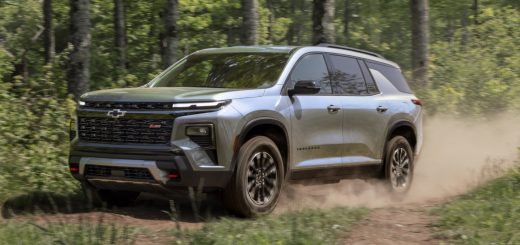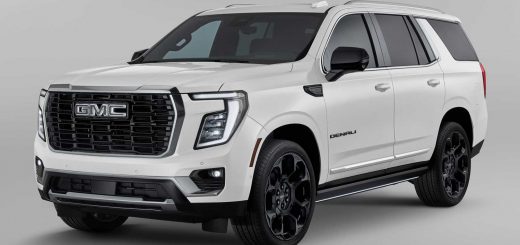As GM Authority covered previously, General Motors will sell the refreshed 2025 Chevy Tahoe and GMC Yukon full-size SUVs in China, marking the first time in which either nameplate has been available in the Chinese market. Both SUVs will be available via The Durant Guild, which serves as the premium import business for GM China. Notably, both SUVs will also incorporate a unique engine and transmission combo not offered anywhere else.
As it turns out, the Chinese-spec 2025 Chevy Tahoe and GMC Yukon will be equipped with the turbocharged 2.7L I4 L3B gasoline engine and GM 10-speed automatic transmission as standard. GM Authority previously reported that the full-sizers would be equipped with the turbocharged four-cylinder L3B gasoline engine, but the news that the L3B will connect to the GM 10-speed automatic, rather than the GM eight-speed automatic, is an interesting development.
When equipped by the Chevy Silverado 1500, GMC Sierra 1500, Chevy Colorado, and GMC Canyon, the turbocharged 2.7L I4 L3B gasoline engine mates to the second-generation GM eight-speed automatic, which makes the L3B’s pairing with the GM 10-speed in the Chinese-spec Chevy Tahoe and GMC Yukon rather surprising.
Also notable are the Chinese-spec L3B’s output figures, set at 300 horsepower and 369 pound-feet of torque when cradled by the Chinese-spec Chevy Tahoe and GMC Yukon. For comparison, the L3B is rated at 310 horsepower and 430 pound-feet of torque when cradled by the Silverado 1500, Sierra 1500, Canyon, and Colorado.
Although the decision to equip the Chinese-spec Chevy Tahoe and GMC Yukon with the turbocharged 2.7L I4 L3B gasoline engine may come as a bit of a shock to some, GM Authority predicted way back in 2019 that both full-size SUVs could offer the turbo ‘four at some point down the line.
As a reminder, both full-size SUVs ride on the GM T1 platform, while vehicle production takes place at the GM Arlington plant in Texas.



















Comments
The CT4-V has had the 2.7 with the 10 speed for a few years now
I think one of the GM reps said before, they played with the idea and said they could release it here.
But, the typical NA/US customer buying their SUVs will want the V8s for the price.
That’s a bold move Cotton.
Interesting, that combo may sell better here than the 8 speed for sure.
The 10-speed transmission is standard across the board of GM FSUVs. These vehicles are probably being run around at higher weight (more passengers, glass, sheet metal etc) than in a Colorado or Silverado where the 8-speed does just fine in those. The 2.7L should be the standard engine in the US-spec FSUVs, and would be a hit if they could tie it to some kind of mild hybrid or PHEV offering beyond the well-intended yet somehow still offensive auto stop.
Let the Chinese have it. That 2.7L turbo-4 is coarse and noisy. China’s Communist regime punitively taxes larger engines, so that’s the reason behind the decision to put the turbo-4 in the big SUVs in that country. GM may yet be foolish enough to try that in this market, but I can’t imagine anyone in North America who would opt for that setup, especially since–according to any figures I’ve seen–the 2.7L turbo-4’s fuel economy is no better than that of the V-8s it’s intended to replace. Then there is reliability, which is, to be kind, a question mark for a small engine moving such a big vehicle. Given the choice, I’d take a 5.3L V-8–or, better yet, the 6.2L V-8–any day.
I would take the 3.0 Duramax over the others in this setup. They can keep the 2.7 in China, for it doesn’t belong here. They say it’s all because of emissions, but when it doesn’t get significantly higher mileage, towing or not, who cares. I say the emissions are only less when it’s not doing much in the order of work, but it would definitely be working harder in these FSV’s than it does in most of the trucks. When it comes to towing, I’m pretty certain that it’s not even close on mileage or emissions, let alone ability to do the job.